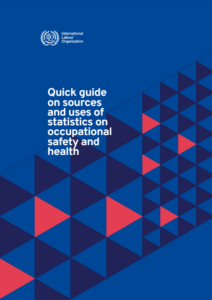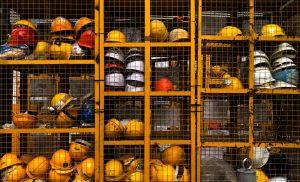Table of Contents
Introduction
Occupational safety and health are vital components of decent work. The physical conditions and mental demands of the workplace determine to a great extent workers’ conditions. Occupational accidents have a significant human, social and economic cost, which we should strive to eliminate by ensuring that all workplaces are safe.
Data catalogue
| Indicator | Frequency | Database | Subject | Download (with labels) | Download (with codes) | Data explorer |
|---|---|---|---|---|---|---|
| Days lost due to cases of occupational injury with temporary incapacity for work by sex and migrant status | Annual | Occupational Safety and Health Statistics (OSH) | Occupational injuries | .csv .dta .xlsx | .csv.gz | |
| Days lost due to cases of occupational injury with temporary incapacity for work by economic activity | Annual | Occupational Safety and Health Statistics (OSH) | Occupational injuries | .csv .dta .xlsx | .csv.gz | |
| Cases of fatal occupational injury by sex and migrant status | Annual | Occupational Safety and Health Statistics (OSH) | Occupational injuries | .csv .dta .xlsx | .csv.gz | |
| Cases of fatal occupational injury by economic activity | Annual | Occupational Safety and Health Statistics (OSH) | Occupational injuries | .csv .dta .xlsx | .csv.gz | |
| Cases of non-fatal occupational injury by sex and migrant status | Annual | Occupational Safety and Health Statistics (OSH) | Occupational injuries | .csv .dta .xlsx | .csv.gz | |
| Cases of non-fatal occupational injury by economic activity | Annual | Occupational Safety and Health Statistics (OSH) | Occupational injuries | .csv .dta .xlsx | .csv.gz | |
| Cases of non-fatal occupational injury by type of incapacity and economic activity | Annual | Occupational Safety and Health Statistics (OSH) | Occupational injuries | .csv .dta .xlsx | .csv.gz | |
| Cases of non-fatal occupational injury by sex, type of incapacity and migrant status | Annual | Occupational Safety and Health Statistics (OSH) | Occupational injuries | .csv .dta .xlsx | .csv.gz | |
| Fatal occupational injuries per 100'000 workers by sex and migrant status | Annual | Occupational Safety and Health Statistics (OSH) | Occupational injuries | .csv .dta .xlsx | .csv.gz | |
| Fatal occupational injuries per 100'000 workers by economic activity | Annual | Occupational Safety and Health Statistics (OSH) | Occupational injuries | .csv .dta .xlsx | .csv.gz | |
| Non-fatal occupational injuries per 100'000 workers by sex and migrant status | Annual | Occupational Safety and Health Statistics (OSH) | Occupational injuries | .csv .dta .xlsx | .csv.gz | |
| Non-fatal occupational injuries per 100'000 workers by economic activity | Annual | Occupational Safety and Health Statistics (OSH) | Occupational injuries | .csv .dta .xlsx | .csv.gz | |
| Registered workplaces that could be selected for labour inspection | Annual | Occupational Safety and Health Statistics (OSH) | Labour inspection | .csv .dta .xlsx | .csv.gz | |
| Number of labour inspectors by sex | Annual | Occupational Safety and Health Statistics (OSH) | Labour inspection | .csv .dta .xlsx | .csv.gz | |
| Number of labour inspection visits to workplaces during the year | Annual | Occupational Safety and Health Statistics (OSH) | Labour inspection | .csv .dta .xlsx | .csv.gz | |
| Inspectors per 10'000 employed persons | Annual | Occupational Safety and Health Statistics (OSH) | Labour inspection | .csv .dta .xlsx | .csv.gz | |
| Labour inspection visits per inspector | Annual | Occupational Safety and Health Statistics (OSH) | Labour inspection | .csv .dta .xlsx | .csv.gz |
Latest posts
Methods

Occupational Safety and Health Statistics (OSH database)
Concise description of concepts and definitions, uses, sources and limitations for indicators on occupational safety and health (injuries and labour inspection).

Labour Market-Related SDG Indicators (ILOSDG database)
Concise description of concepts and definitions, uses, sources and limitations for labour market-related sustainable development indicators.

Quick Guide on sources and uses of statistics on occupational safety and health
This guide gives an overview of the main aspects of occupational safety and health statistics, including their relevance and uses.

Decent Work and the Sustainable Development Goals: A Guidebook on SDG Labour Market Indicators
This Guidebook provides a detailed overview of the labour market indicators included in the Sustainable Development Goals Global Indicator Framework. It is intended to serve as a manual of best practices for calculating and interpreting the SDG labour market indicators, with a view to monitoring progress made at the national and international levels towards the achievement of the SDGs.

Guide on the Harmonization of Labour Inspection Statistics
This publication provides a methodology for the use of common terms and definitions and common procedures for the collection and compilation of labour inspection data. It also incorporates several additional recommendations that further the objective of harmonizing labour inspection statistics.

Decent Work Indicators – Guidelines for producers and users of statistical and legal framework indicators
This manual presents guidelines on the decent work statistical indicators and legal framework indicators. It is divided into eleven chapters which correspond to the ten substantive elements of decent work as well as to the economic and social context for decent work.

Occupational injuries statistics from household surveys and establishment surveys: ILO manual on methods
This manual aims to assist those responsible for compiling data on occupational injuries with newly developed tools for collecting these data from household surveys and establishment surveys, to supplement the data compiled through notification systems.

Sources and Methods Volume 8: Occupational injuries (1999)
This volume contains the descriptions of national statistics on occupational injuries.

Resolution concerning statistics of occupational injuries (resulting from occupational accidents)
Adopted by the 16th ICLS (1998), this resolution sets standards of good practice for the collection and presentation of statistics of occupational injuries as guidance for countries wishing to revise their existing statistical systems in this field, or establish new ones. Its provisions should not undermine any existing national systems, nor should they lead to duplication of effort.




